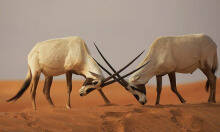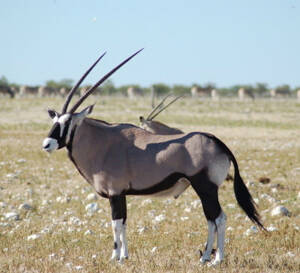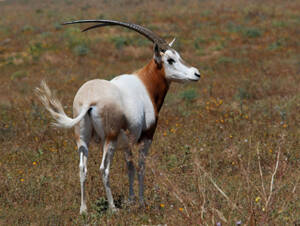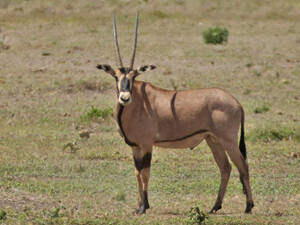
Scimitar-horned oryx (Oryx dammah) is a Sahel–Sahara antelope once widespread across North Africa.Heavy hunting and habitat loss caused its disappearance from the wild; it is now listed as Extinct in the Wild (EW).Since 2016, reintroduction projects in Chad have built free‑ranging, breeding he...

Arabian Oryx (scientific name: Oryx leucoryx) is called Arabian Oryx in foreign language. It has no subspecies and is the smallest member of the genus Oryx.Arabian Oryx live in groups, with groups of different sexes, 5-30 in each group, and groups of more than 100 have also appeared. They are genera...

South African Oryx gazella (scientific name: Oryx gazella) is also known as Gemsbok in foreign languages. It has 4 subspecies.South African oryx live in groups, with 6-40 individuals in each group, with an average of 14 and a record of more than 300. The group is centered on a powerful adult male or...

Scimitar-horned oryx (scientific name: Oryx dammah) is called Scimitar-horned oryx in English. It has no subspecies. It was discovered in 1816 and named by biologist Philipp Jakob Cretzschmar in 1827.Scimitar-horned oryx are active in the early morning and evening, usually gathering in groups of mor...

East African Oryx (scientific name: Oryx beisa) English Beisa Oryx, French Oryx Beisa, German Eritrea-Spiessbock, Somali Be'id, Swahili Choroa, there are 2 subspecies.The East African Oryx has evolved a variety of physiological characteristics to adapt to the desert environment due to its long-t...